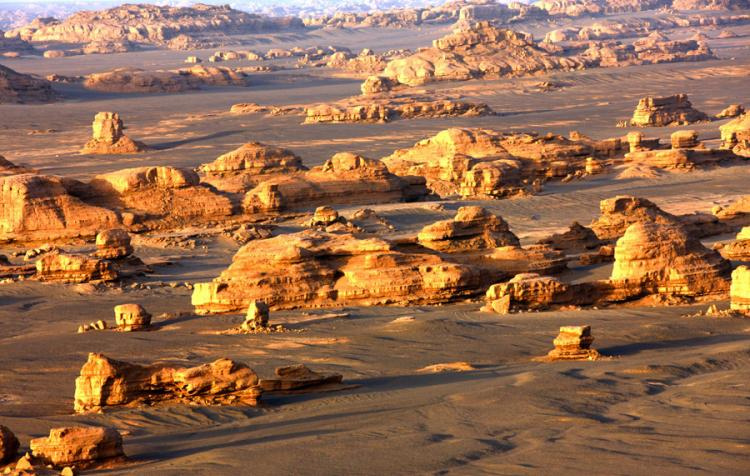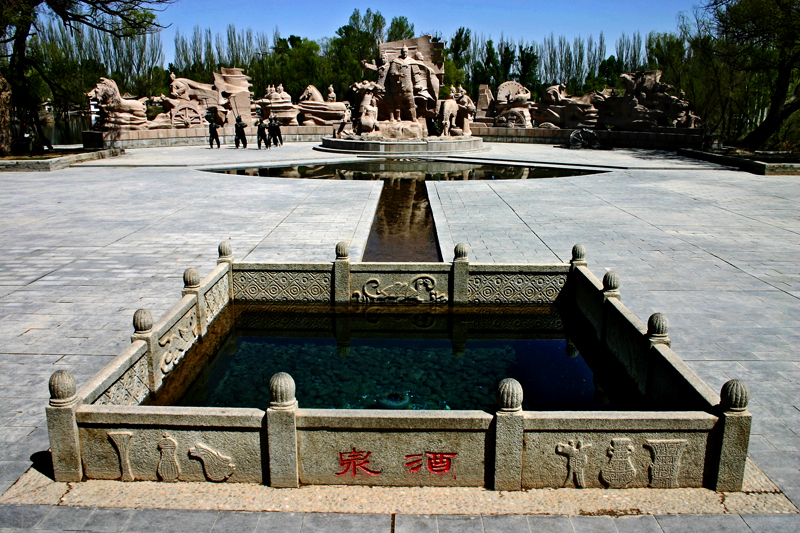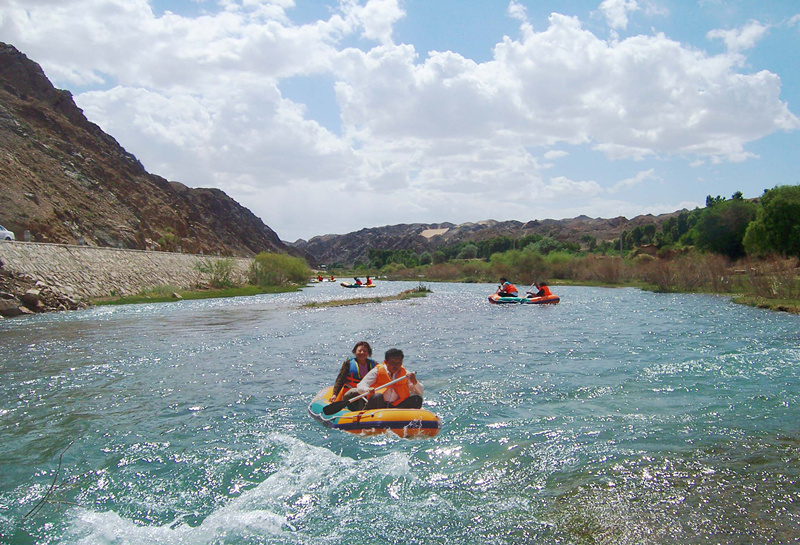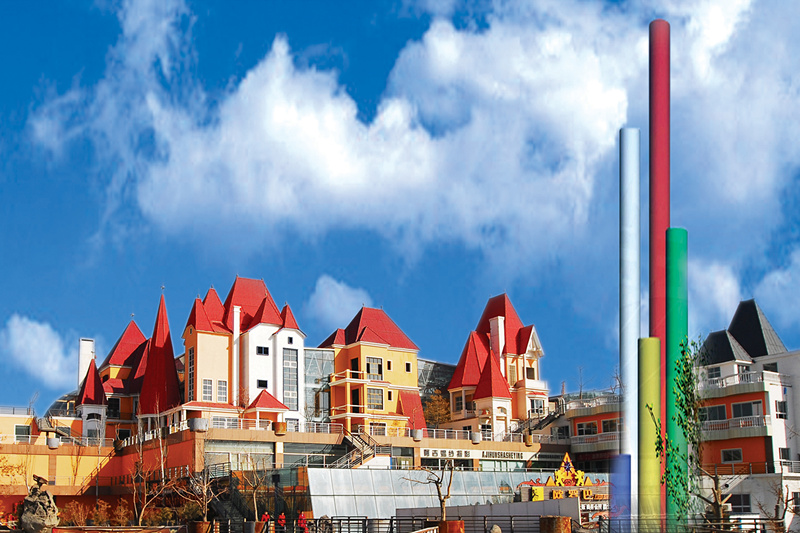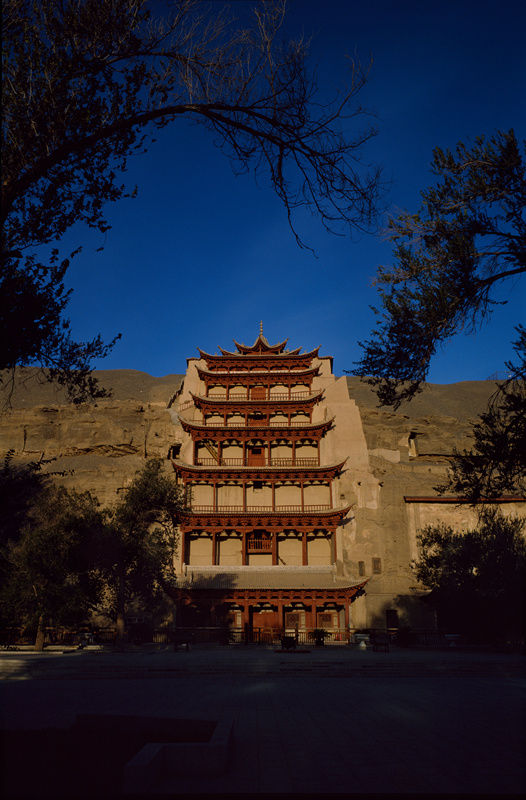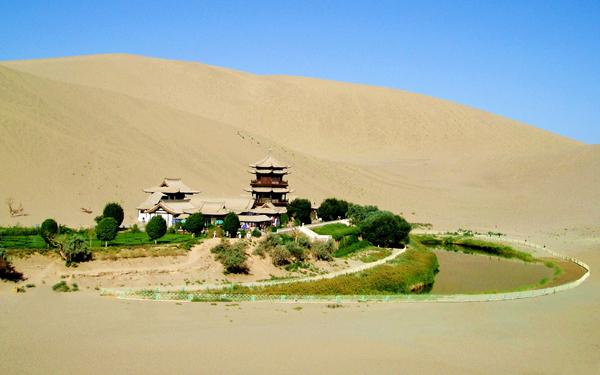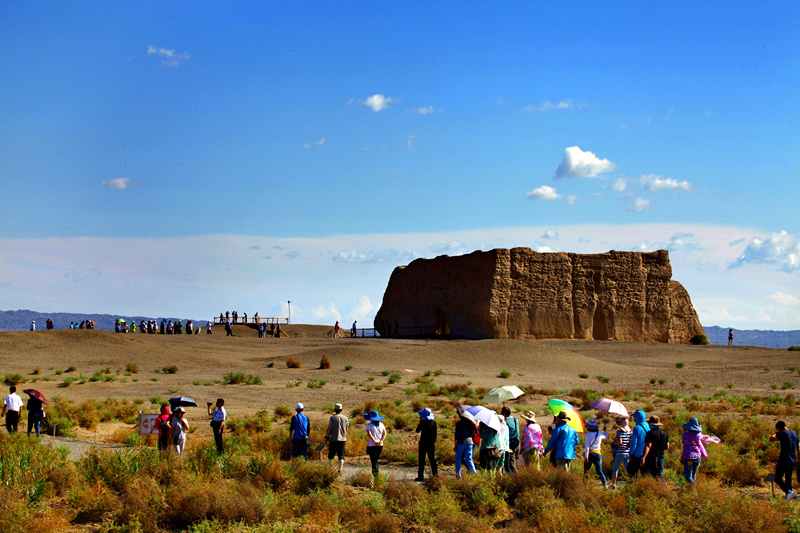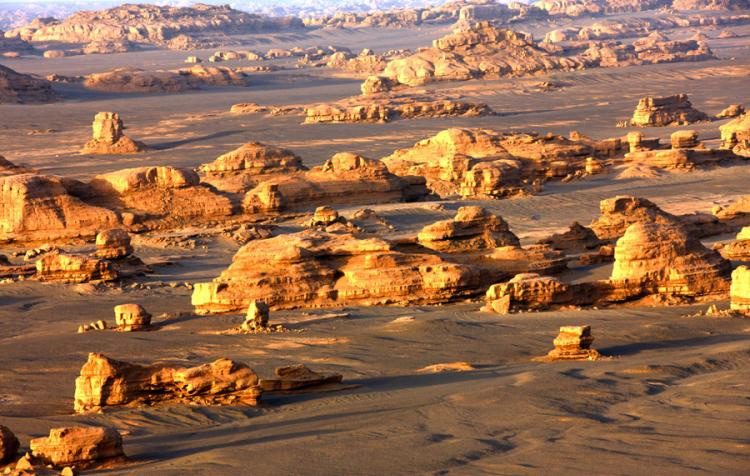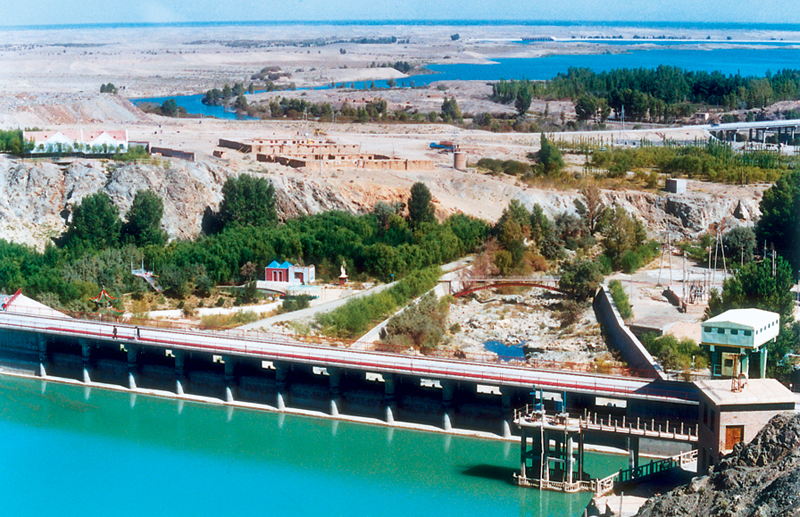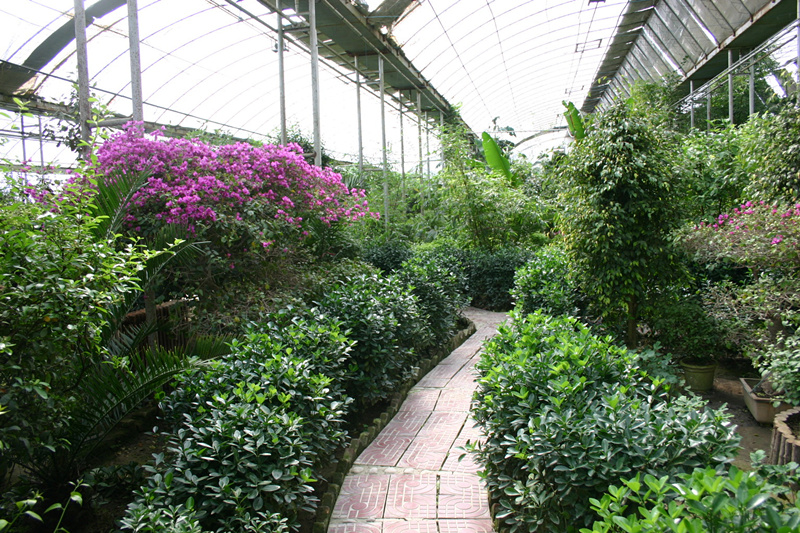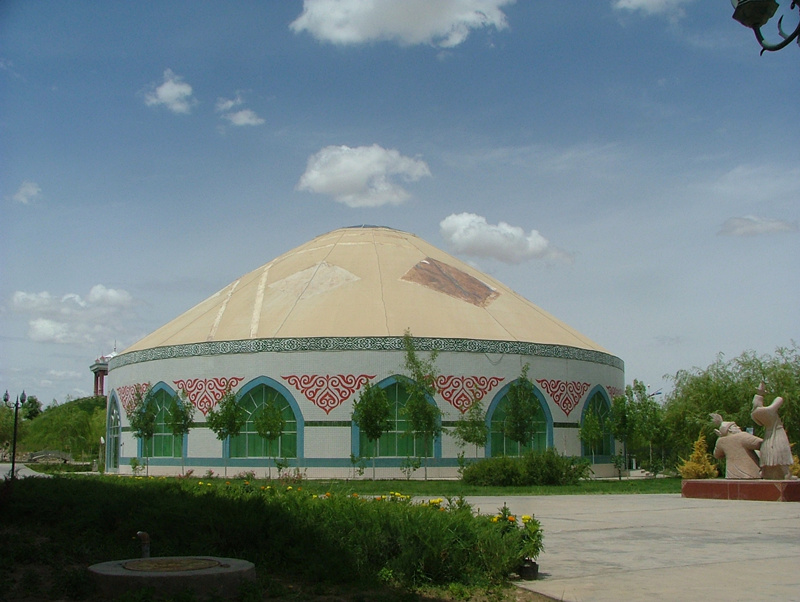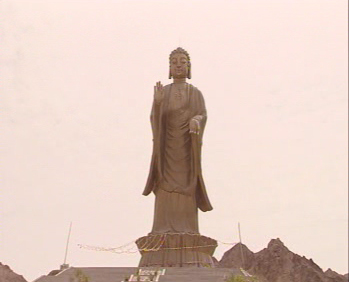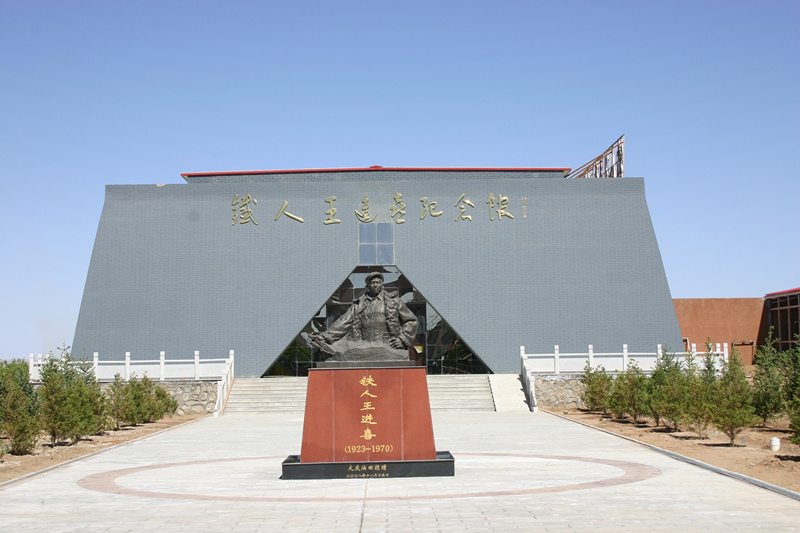Jiuquan City
Jiuquan City, located in the northwest of Gansu Province, is the source of the character “肃" in the name of Gansu. Jiuquan was one of the four counties in Hexi region in the Han Dynasty. It was a traffic fort on the way to the Western Region, and a place of strategic importance along the Silk Road. The City covers an area of 192 thousand km2. Its total population is 1.096 million. 1 district, 2 cities and 4 counties are under its jurisdiction. The terrain of Jiuquan slopes from southwest to northeast. Qilian Mountain region is a range of mountains 3000 to 5000 meters high, layer upon layer, and very steep. Shule River basin, situated in the inland and west of Jiuquan, has a typical continental climate. It is about 170 to 1900 meters above sea level. The south mountain region has a cold and semiarid climate and the annual average temperature is 4℃ to 6℃.The Corridor region has a temperate and arid climate and the annual average temperature is 5℃ to 9℃.The overall climate feature is less rainfall, more evaporation. It is one of the areas with the least rainfall in China, and the most evaporation in Gansu Provision. It has long sunshine, a significant temperature difference between day and night, dry and short summers, cold and long winters. In spring, the temperature rises quickly. Anxi, a dry and windy place, has long been known as “World Wind Store" Nomads of Xia, Shang, Zhou Dynasties, Spring and Autumn and Warring States Period, Qin Dynasty, Rouzhi and Hun pastured and hunted here. In 121 B.C., Emperor Wu of the Han Dynasty dispatched Huo Qubing, the General of the Flying Cavalry, attacked Hexi region twice, and defeated the Huns. Then in the Hexi Corridor, “four counties are established, and two passes are controlled" (Jiuquan County, Wuwei County, Zhangye County, Dunhuang County, Yangguan Pass, Yumenguan Pass), the Great Wall was built, forts constructed, people immigrated, wasteland opened up for cultivation of farm crops by troops, farmland developed, the Silk Road opened, all of which were a new chapter of development in this area. From then on, on this magic oasis, splendid culture, art, passes, forts, beacon towers, camel bells, painters, Buddha in the grottos were bred. Tragic battles, hard development, legendary tales, and heroic poems constitute a colorful picture of history, and lay the profound groundwork of culture. Continuous mountains, the wild Gobi and adjoining basins of Jiuquan constitute the vigorous and unique northwest scenery: white glacier and snow, green plains and oases, and the mirage in the Gobi desert. Historical Site of the Han Dynasty (AAAA)
Historical Site of the Han Dynasty, also known as the Lake Park, is situated 2 km to the east of Jiuquan City. Covering an area of 270 thousand km, it is the only garden of the Han Dynasty completely conserved in the Hexi Corridor. The 2000-year-old park is a classical and historical garden presenting the power of the Han Dynasty, blending with delicacy of the south of the Yangtze River. The major historical sites in the park include: Wine Spring of the Han Dynasty, Sir Zuo Willow, Spring Lake, and a lot of ancient buildings. Ancient Wine Spring is thousands of years old. Jiuquan city gets the name because of it. It is the center of the Jiuquan culture. There are stone tablets in the park carved “Historical Site in Jiuquan of the Han Dynasty" and “Ancient Jiuquan County" respectively, the plaque written by Zuo Zongtang “Earth full of Spiritual", and eight scenic spots——the historical Site in Jiuquan, Gold Pearl in the Moon Door, Historical Site in the Han Dynasty, Green waves at Qilian, In the Depth of Clouds, Clear Flowers ad Moon, a Moonlit Boat accompanied by Reeds. This is a place enjoying the good name of “An Abundant Place Beyond the Frontier", and “A Pearl in the Big Desert", with ancient and rare trees, decorative pavilions and halls. It is one of the attractions worth seeing in tourists’ passage to Jiuquan. Yumen Chijin Gorge Scenic Area (AAAA)
Chijin Gorge Scenic Area is located 50 km to the north of New District in Yumen City, in the Chixia Valley in the middle reach of Shiyouhe River. The area has beautiful scenery, a pleasant climate, and plentiful tourism resources. There are numerous natural and cultural scenic spots, such as the magnificent reservoir dam, the grand hydropower station behind the dam, the inscriptional record of water-breaking in Chijin, a statue of Kwan-yin dropping water, Longkou Falls, one-hundred-meter-long falls, The Dragon King Pavilion, Mountain Spirit Dwelling, Sir Zhao Memorial, and so on. And there are also many other forms of entertainment such as drifting on the river, launch dashing, sands bath, boating and fishing. In 2012, a big water sports amusement “Advance in the Chijin Gorge" was built in the scenic area. It includes 6 water games: Crazy Track, Happy Turning Disc, Merry-Go-Round, Happy Turning Bed, Disturbing Steps, and Wildwater. Being the first big water sports amusement in the Northwest, it attracts many visitors to join in. Fukang Dream in Heaven Scenic Area (AAAA)
Fukang Dream in Heaven Scenic Area, at Fukang Road in Suzhou District of Jiuquan City, is known as “a place with spring all the year round in the Northwest". The major items here include sightseeing, shopping, odd stones exhibition, looking for Ganoderma lucidum, TV Shooting, performances, and souvenir selling. Streets at the area are designed according to garden art. The rockery on the street is the biggest and tallest indoor artificial hill in the world. It wins the certification of “The tallest indoor artificial hill" conferred by China Records Guinness Headquarters. Street of Odd Stone centering on odd stones, calligraphy and craving art is also certificated by China Records Guinness Headquarters. On the 1000-meter-long Street lined with plum trees, more than 1200 strange stones are displayed. It is the longest indoor street with the biggest and the most stones in the world. There are in the Eco-tourism scenic area 200 potted plants in which potted common crapemyrtle flowers predominate. A continuous stream of visitors come to the exhibition. The performance garden centering on folk customs, and four exhibition halls centering on popularization of science and appreciation of treasures enrich the cultural lives of tourists; at the same time they add interest, artistry and amusement to the scenic area. Jiuquan Satellite Launch Center of China
Jiuquan satellite launch center, also known as Dongfeng Aerospace City (JSLC), is located deep in the Badain Jaran Desert, 210km to the northeast of Jiuquan City. Being one of the emission test bases of scientific satellite, technological experiment satellite and carrier rocket in China, it is not only the oldest and largest integrated launch center for missiles and satellites in China, but also the only launch site for manned space flight. The scenic spots available for domestic tourists are: the Satellite Launch Field, the Command and Control Center, the Long March Rocket Two, the Testing Center, the Exhibition Hall of the History of Jiuquan Satellite Launch Center, Cemetery of Martyrs, the Dongfeng Reservoir, the Desert Forest of Populus Euphratica, etc.. Mogao Grottoes
Mogao Grottoes, also known as the ”Thousand - Buddha Cave”, is located 25 km to the southeast of Dunhuang City. It is one of the Four Caves of China, the other three being Yungang Grottoes in Datong, Shanxi, Longmen Grottoes in Luoyang, Henan, and Maiji Mountain Grottoes in Tianshui, Gansu. The building of Mogao Grottoes began in the former Qin period of the Sixteen Kingdoms and continued to be built all through the Sixteen Kingdoms, the Northern Dynasties, Sui, Tang, Five Dynasties, Western Xia, and Yuan Dynasty, forming a huge scale with 735 caves, murals of 45,000 square meters, and 2415 muddy painted sculptures. It is the largest place of Buddhist art with the richest content existing in the world. There are more than 500 caves, preserving 492 paintings and sculptures. According to the construction and function, the grottoes are divided into the Central Column Grotto (Zhiti Grotto), the Sanctuary Grotto (the Central Altar Grotto), the Bucket Top Grotto, the Great Image Grotto, Nirvana Grotto, Zen Grotto, the Monk Room Grotto,the Barn Grotto, the Shadow Grotto, the Tomb Grotto, etc.. Besides these, there are also some pagodas. The largest cave is more than 40 meters high and 30 meters wide; the smallest one is less than 0.3 meters high. The center-tower style, an exotic form preserved from the early caves, reflects how the ancient artists digested and absorbed the exotic art forms before making them national in China. Many of them are master pieces of extant ancient architecture. Outside many caves, there survive in good condition wooden cave eaves of theTang and Song Dynasties which are rare ancient wooden building examples with a high research value. The murals of Mogao Grottoes are rich and colorful, representing Buddhist stories, mountains, rivers, and pavilions. On the basis of nationalization, the ancient Chinese artists learned a lot from the art of Iran, India, Greece and other countries. The murals symbolize the developed civilization of the ancient Chinese nation. The different painting styles of different dynasties reflect the politics, economy, and culture of feudal societies in ancient China. They are a brilliant chapter in the history of ancient Chinese art, providing precious image materials for the study of the history of Ancient China. The Scenic Area of Dunhuang Singing Sand Mountain and Crescent Spring (AAAA)
The Scenic Area of Dunhuang Singing Sand Mountain and Crescent Spring is located 5 kilometers to the south of Dunhuang City. Since ancient times, the scenic area has been well known for its wonderful landscape: “Mountain and spring coexist, sand and water are in harmony." It is honored as “One Must-See Beyond the Great Wall". Along with Mogao Grottoes, Singing Sand Mountain and Crescent Spring belong to the Two Musts in the south of Dunhuang City, which both the domestic tourists and those around the world are eager to visit. In ancient times, Singing Sand Mountain was also called Shajiao Mountain, also known as dune Holy Sand Mountain. When tourists climb the mountain, the sand roars with the foot falling, hence Singing Sand Mountain. The sand of Singing Sand Mountain is of five colors: red, yellow, green, black and white, which is called Five-color Sand. Crescent Spring is embraced by Singing Sand Mountain and it is so named because it looks like a crescent moon. For thousands of years, the sand has surrounded the spring, and the spring has reflected the Sand Mountain, like crystal jade inlaid in the valley of the Sand Mountain. “The sand sings when the wind blows; the spring reflects the moon clearly." It is only 10 meters between the flowing sand and the spring. In spite of the strong wind, the spring has never been covered by the quicksand. Lying in the desert, the spring water is never muddy or dry. This kind of geomorphological feature — “Mountain and spring coexist, sand and water are in harmony" — is nothing other than a wonder. There is an ancient poem: “The sky is blue and clean; The Crescent Spring is a wonderful scene. Embraced by the sand mountain, the crystal pool is enlivened by ripples green." Yang Guan Relics Scenic Area of Dunhuang (AAAA)
Located 70 kilometers to the southwest of Dunhuang City, Yang Guan Relics Scenic Area of Dunhuang is a special scenic area consisting of historical sites from the Han and Tang Dynasties, natural desert scenery, ecological agriculture sightseeing and the Yangguan Museum. Its characteristic is of cultural value, sightseeing and leisure experience. The scenic area is home to many marvels and is one of the places in Dunhuang where cultural relics are distributed most densely. It consists mainly of the historical relic sites of more than two thousand years, the natural landscape of desert oasis and modern human landscapes. On Dundun Mountain there stands the Beacon of the Han Dynasty which is the commanding point of the scenic area, known as ”Ears of Eyre of Yangguan”. It is a witness of the history of Yangguan. Yangguan museum is located in the center of the scenic area. There is also the Antique Beach, 800 meters to the south of the Beacon, which is the site where the Yangguan Ruins are located. To the east of the Beacon, there are the old sites of Tangshouchang City and Hanwowa Lake where the Heavenly Horse was unearthed. To the southwest, the southern section of the Silk Road winds in the mountains. In the Desert Forest Park there grow ancient trees towering in the sky and springs gurgling. Climbing high and looking from afar, you can have a panoramic view of the snow-crowned Altun Mountain (Golden Saddle Mountain in ancient times) and the vast, magnificent Gobi desert. The tomb groups of the Han and Jin Dynasties are dotted everywhere. Along with the magnificent natural landscape of the desert oasis, the scenery there is marvelous. Dunhuang Yadan Geological Park (AAAA)
Dunhuang Yadan National Geological Park, located about 180 kilometers away to the northwest of Dunhuang City, covers an area of 398 square kilometers. It is the largest and the most beautiful Yadan Landform Group in Asia with the most developed geological morphology. The films and television works including Hero, Royal Legend, and the Monkey King were shot here. The geological park is mainly made up of Yadan Landforms formed by wind erosion, belonging to the ancient Lop Nor. In the park there distribute various landforms such as Mongolian Yurt, Mongolia, Camel, Stone Bird, Stone Man, Stone Buddha, Stone Horse, etc.. They are in different poses and with different expressions, being true to life. It is just like a medieval city where the miniatures of many world famous buildings can be found here. After nightfall, strong wind makes a horrible sound as if thousands of wild animals are roaring, which is rather terrifying, hence the name ”Yadan Monster City”. With its unique desert scenery, various geological wonders and ancient folklore, Dunhuang Yadan Geological Park attracts countless visitors and adventurers to explore the mysteries of Nature. The Ancient City of Dunhuang (AAA)
The Ancient City of Dunhuang, also known as Dunhuang Movie and Television City, a Shanzhou Ancient City Modeled on the Style of the Song Dynasty, is located in the Gobi desert on the southern side of Yangguan Highway of Dunhuan City, 25 kilometers away from the city center. It was built in 1987 for the Sino Japanese co production of the grand historical story Dunhuan. Taking the Riverside Scene at Qingming Festival as the blueprint, its elaborate design and construction are modeled on the ancient Chinese architectural style, with a construction area of 12,700 square meters. The architecture of the Ancient City of Dunhuang is of rich western styles. The city has three gates: East Gate, West Gate and South Gate. The gate tower stands high. In the city there are five main streets: Gaochang, Dunhuan, Ganzhou, Xinging and Bianliang. On both sides of the streets there stand Buddhist temples, pawn shops, warehouses, taverns and residential houses, etc.. The ancient city represents the rich local features as well as the friendly exchanges in the Northern Song Dynasty between the Central Plains and Dunhuang, Dunhuang and the western regions. It is known as the Architectural Art Museum of North China. Here more than twenty domestic and foreign movies and television plays have been shot, including The Canonization of the Gods, The sword of conquestThe Sword of Conquest, New Dragon Inn, Dunhuang Nights, Desert Prince and Mirage. It has now become the main scenic spot in Dunhuang. Jinta Mandarin Duck Lake Scenic Area (AAA)
Mandarin Duck Lake Scenic Area is located in the valley 12 kilometers to the southwest of Jinta County. Mandarin Duck Lake Scenic Area, with mountains and a lake beside it, has beautiful scenery. The scenic area is grand and magnificent. With particularly favourable natural conditions, it is commonly known as Treasure in the Desert or Pearl on the Frontier. Green Mountain Temple, located on the east bank of the Jinta Mandarin Duck Lake reservoir, is the natural barrier in the south of Jinta. Green Mountain Temple is one of the eight famous ancient sight spots. Here there are towering mountains covered with green trees. Surrounded by green mountains, Green Mountain Temple has very charming scenery, hence the pretty name Green Mountain Temple. Jiuquan Evergreen Garden (AAA)
Evergreen Park, located in on Suzhou Road of Xincheng District, Jiuquan, Gansu, covers an area of 2000 acres. It is the only scenic spot with agricultural industrialization as its theme. Equipped with perfect modern agricultural facilities, it has distinctive characteristics and is an ideal place for agriculture sightseeing. Jiuquan Evergreen Garden was constructed in 1995 by Jiuquan Evergreen Company of Flowers and Trees with an investment of 65,000,000 Yuan. Bringing together more than 800 species of domestic and foreign rare flowers and plants, the park is the largest base for seedling, and cultivating flowers and plants in the Hexi area of Gansu Province, with the largest indoor and outdoor Tropical Botanical Garden and Bonsai Garden in Hexi area for appreciation all year round. In addition, there are some other service facilities including a Flower Exhibition Hall, Reception Room, Conference Hall, the Painting and Calligraphy Museum and unique Grape Promenade, Green Channel, etc.. Aksay Kazak Cultural Park (AAA)
The Aksai Kazak Cultural Park, located in the center of the Aksai Kazak Autonomous County, borders Tuanjie West Road on the north, close to Heping Road on the east, reaching Wenhua Road on the west and Jianshe West Road on the south. It covers an area of 48,000 square meters. It is an entertainment park for experiencing local culture, bringing together landscape garden, horse racing, leisure, entertainment, and catering. The Aksai Kazak Cultural Park enjoys a charming environment with green trees, blooming flowers and unique architecture which highlights the characteristics of animal husbandry culture. For example, the yurt architecture is in harmony with the mosque nearby, forming a special scenery. In the park, there is an oval racetrack, a Kazakh Folk Museum, a Kazak yurt which is the largest one in Asia, and three rows of small yurts, etc.. The main activities of National Cultural Park are: local singing and dancing performances including traditional Kazak dance; singing folk songs and playing traditional folk musical instruments; equestrian activities including Buzkashi, “Chasing Girls", horseback Tug-of-war, camel races, etc.; nomadic cultural activities including experiencing the nomadic life of the Kazak people, enjoying unique local snacks (such as horse intestines, dried lamb, grabbing mutton, milk curds, milk knots , butter, milk tea, Kumiss, etc.); in the Folklore Museum there display rare wild animal and plant specimens of Aksay County, samples of mineral resources, valuable Chinese herbal medicine samples, national historical relics, local costumes, local articles for daily use, production tools, folk arts and crafts, etc.. Dunhuang Sanwei Mountains (AAA)
Go southeast from Dunhuang City, turn left on the pathway 3 km away from Mogao Grottoes, go another 2.5 km, and you will arrive at the foot of the Sanwei Mountains. Cover the steep curving road of 350 km opened up by bombing the mountain and walk 3 km across the mountain, and you arrive at the Sanwei Holy Land. The Sanwei Mountains are the best holy land in Dunhuang. It is listed in the local chronicle as the No. 1 of the eight holy lands of Dunhuang, saying it has “steep mountains towering in the east". The Sanwei Mountains stretch dozens of miles from east to west. The main mountain is opposite Singing Sand Hill across the Daquan River. “The three mountains are towering in the sky, so dangerous, likely to fall down." Hence the Sanwei Mountains, which means “Three Dangerous Mountains". In the east-west scenic area of 6 km, there are many Taoist temples and monasteries including Memorial Monastery Gateway, the Queen’s Palace, Kwan-yin Well, Amitabha Hall, Kwan-yin Hall, Dragon King Temple, Peace Temple, Sakyamuni Statue, The Dragon King templeLaojun Temple, etc.. High on the mountains, there are also the Music Hall and various inscriptions and statues. Guazhou Bridge Bay City Scenic Area (AAA)
Guazhou Bridge Bay City Scenic Area, located 80 km away to the east of Anxi County by Ganxin Highway, is 320 meters long from the east to the west, 122 meters wide from the south to the north, and the residual part is 5 to 8 meters high. There are corner piers on the four corners; in the city there remain some buildings and some other relics. Originally there was a bridge called Tiansheng Bridge across Shule River on which was incessant stream of horses and carriages. This place curves naturally along the flowing river, hence Bridge Bay. It is said that Kangxi once dreamed that he came to somewhere and saw a continuous oasis. The water in the river was clean and there were two towering trees by the river. On the tree branches were hanging dazzling Crown and Jade Belt. It was really a fairyland Bridge Bay City also has a Museum where Yumen Memorial Museum of “Iron Man" Wang Jinxi (AAA),
Yumen Memorial Museum of Iron Man Wang Jinxi, located in Chijin service area of Huojin Highway, covers an area of 22,000 square meters, and the total construction area is 7020 square meters, out of which The memorial hall is divided into five parts (Experiencing Hardships, Starting in Yumen, Fighting in Daqing, Rewarding His Hometown, Eternal Spirit). There |
Jiuquan City
December 21, 2016
VIEWED: 0
Recommended Products
see all-
Paris to Marrakech
HKD 6415 + Book -
Spain, Portugal & Morocco
HKD 3645 + Book
